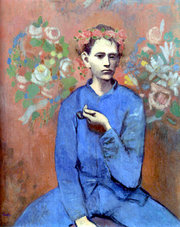Other Periods of Pablo Picasso's Career
Although Picasso is best known for his Blue Period (1901-1904) he is credited with four additional periods or movements: Rose, African, Analytic Cubism and Synthetic Cubism. These periods were heavily influenced by Picasso's contemporaries at the time. They included Guillaume Apollinaire, George Braque, Henri Matisse, and Gertrude Stein,
Rose Period (1905-1907)
|
|
While Picasso's Blue Period featured somber subject matters, his Rose Period is characterized by a more colorful and cheerful style. This is evident in his use of colors. The artist used a variety of oranges and pinks as well as harlequins during this period. Many of his works featured a circus theme or lyrical quality. Picasso's Rose Period is considered French influenced and it was also during this time Picasso met Fernande Olivier in Paris. His paintings at this time reflect the warm relationship he shared with her. Their long-standing relationship also exposed him to the French masters. Picasso flourished in Paris and it was during this time he painted Boy with a Pipe/Garcon ala Pipe , which would be his highest selling painting. Other paintings representative of this period include Harlequin Family and Boy with a Dog, both completed in 1905. |
African (1908-1909)

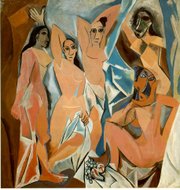
Picasso's African Period has also been referred to as his Negro Period or Black Period. He explored African art for several years and when African artifacts found their way to the museums of Paris, he used them as the inspiration for the works of this period. In 1907 he painted Les Demoiselles d' Avignon. The influence of Cezanne and African sculpture can be seen in the distorted and fragmented forms. The painting is seen as the first Cubist piece of art, although Picasso would not formally enter his Cubism period until 1909. Les Demoiselles d' Avignon was also considered a radical departure from traditional art forms of preceding ages.
Analytic Cubism (1909-1912)
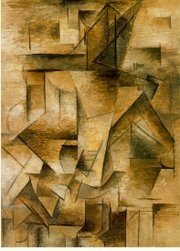
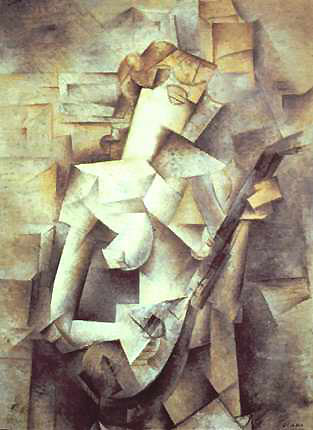
Picasso's African period was followed by a style know as Analytic Cubism. Where Picasso had dabbled in cubism with Les Demoiselles d' Avignon, he was now using natural forms and reducing them into basic geometric parts on a two-dimensional plane. Color was almost non-existent and monochrome brownish tones were favored by the artist. Cylinders, spheres and cones were used to represent the natural world and they were analyzed in terms of their shapes. During this time Picasso was influenced by another Cubist pioneer, Georges Braque. Picasso's Analytic Cubism Period is best illustrated in his 1910 painting, Le Guitariste. He also completed The Glass, Girl with a Mandolin and Portrait of Ambroise Vollard during this phase.
Synthetic Cubism (1912-1919)
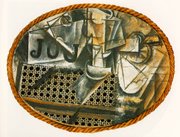
|
Picasso found Synthetic Cubism to be a natural progression from Analytic Cubism. The style made history as it was the first time collage had been used as fine art. The first work of this period, Still Life with Chair-caning consisted of oil cloth pasted on the canvas. The picture was oval in shape and framed with a piece of rope. |
Additional Styles (1912-1973)
| Pablo Picasso's career knew many genres. In the 1920s he focused on classical themes of nudes and monsters. The bombing of Guernica in 1937 influenced his landmark painting, Guernica, a statement against fascism and war. His work took on an element of fantasy and comic invention later in his career. Pablo Picasso produced thousands of drawings, illustrations and stage designs, while working consistently in sculpture, ceramic and the graphic arts. |
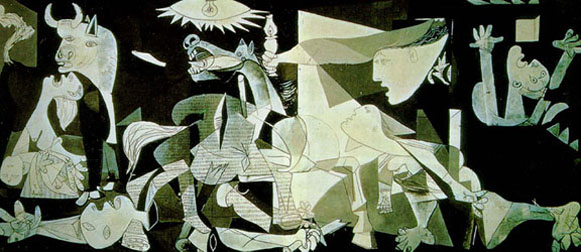
|

